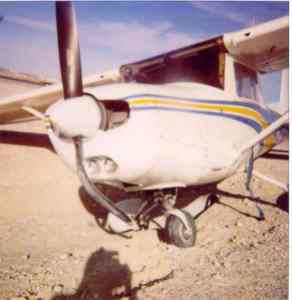When Did Flying Become So Boring?
Flying is the wind, the turbulence, the smell of exhaust, and the roar of an engine; it’s wet cloud on your cheek and sweat under your helmet.
–Richard Bach, 1960
The pilot wore polyester pants. The picture is from 1971, an era when pilots no longer needed helmets and boots and goggles to fly. Wood-and-fabric aircraft had given way to closed cockpits. The woman’s hairdo wouldn’t be mussed.
The purpose of general aviation was never to get from Point A to Point B, but to be in the air between Point A and Point B.
Pilots used the term “$100 hamburger” to justify a flyout to a passenger. The pretext was that an airport destination served such good hamburgers that it was worth a $100 flight to get there. The trip would then be so exhilarating that the pilot could serve up a bowl of pre-moistened dog chow and the passenger wouldn’t even notice.
We don’t hear the term “$100 hamburger” bandied about anymore, because these days it’s more like a $1000 hamburger. And flying has become so unspectacular that there really better be a $100 hamburger at the end of the runway.
With each new generation of expanding color displays, landscape is squeezed from the pilot’s field of vision until the windscreen has become a sliver. It is 2015 and VOR navigation systems are being decommissioned. Not because pilots can navigate by dead reckoning. The FAA is retiring VORs because today’s pilots fly by following GPS instructions. You can get the same thrill lining up ILS needles in a flight simulator.
What would Jonathan Livingston Seagull say about Cirrus’s modern glass cockpits? Pilots who train in new aircraft not only have never heard the wind, but also have never seen a tumbling heading indicator or airspeed stuck at 0.
Now flying is not about getting from Point A to Point B nor the wind in the wires. General aviation in modern lightcraft is about raising a high-altitude middle finger to those who can’t afford it.
No wonder people think flying is boring. It is.
See Also:
Richard Bach, I’ve Never Heard the Wind, Flying Magazine, Feb 1960.





